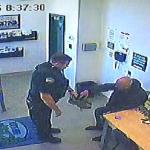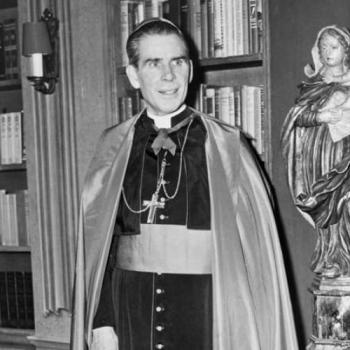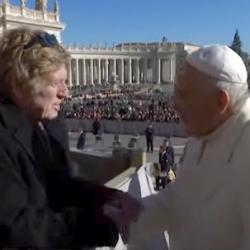From Sister Suzanne Toolan and the Sisters of Mercy website comes this remembrance:
I wrote “I Am the Bread of Life” for a San Francisco archdiocesan event in 1964. I was teaching high school at the time and wrote the song during my free period. When the bell rang for the next class I decided I didn’t like the music, so I tore it up and threw it in the wastepaper basket.
My classroom was next to the infirmary, where the girls who didn’t want to take tests or were otherwise unprepared for class went for a period or two until they were tracked down by an exasperated teacher. As I left my classroom, a freshman girl came out of the infirmary and said, “What was that? It was beautiful!” I went back into my classroom, took the manuscript out of the basket and taped it together. It has had a life of its own ever since.
“I Am the Bread of Life” began to appear in archdiocesan liturgies. There were many purple ditto copies going around. Not everyone liked the hymn. One liturgist gave talks on why it shouldn’t work, saying: “It is not metric; its tessitura [vocal range] is too high. Its tessitura is too low.” Others objected to it because they felt by placing the words of Jesus into the mouths of the assembly, those words were being attributed to the assembly.
Travelers to Europe and Asia in the 70s and 80s would tell me about hearing “I Am the Bread of Life” in different countries. I have a copy of it in a Slavic language, in Korean and Spanish, but it has been sung in so many other languages. It is included in hymnals of other Christian faith traditions. I remember being introduced to a woman who was Episcopalian. When she heard my name she said, “Oh, number 335!”—the number of the hymn in the Episcopal Hymnal.
I could never figure out how the hymn became popular. I know in our Roman Catholic tradition it came at the beginning of our use of the vernacular, and we simply didn’t have much to sing in our own language. But I also think its popularity stems from its message of resurrection, which is so strong in these words of Jesus. We so need that message of hope. I am always touched when people tell me that at the funeral of a mother, father or friend, these sung words of Jesus gave them consolation. Then I know the hymn has done its work.
Indeed, my most vivid memory of this hymn is from my mother’s funeral in 1994, when it was sung by a young soprano as a solo during communion at St. Patrick’s Catholic Church in Rockville, Maryland. That rising chorus moved me then. It moves me now.
Love it or hate it, “I Am the Bread of Life” may be one of the most widely known and enduring Catholic hymns of the 20th century.
Below is a beautiful rendition from a remastered album recorded in 1970. To my way of thinking, this is how it should be heard.
Photo: Michael Collopy / The Sisters of Mercy.org












